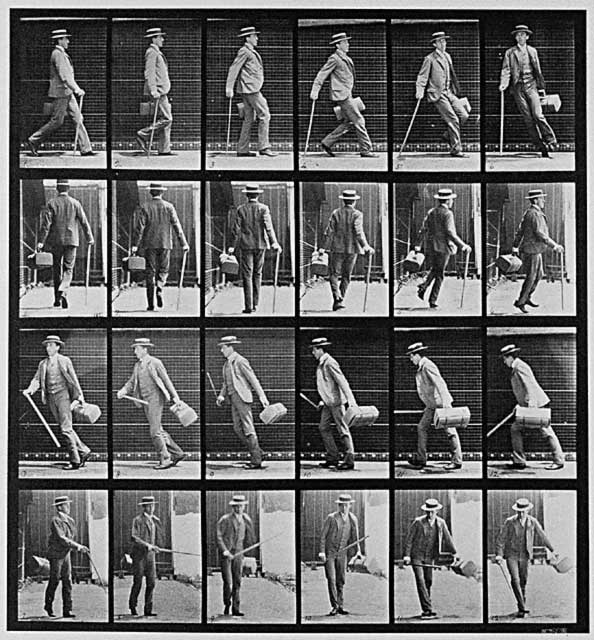Out on a limb: Low tech, high value
The use of advanced technologies to provide feedback to patients during rehabilitation is all the rage in lower extremity healthcare. But, as exciting as these new modalities can be, it’s important to remember that low-tech feedback strategies can make hi-tech data even more clinically useful.
Jordana Bieze Foster, Editor, Lower Extremity Review November 2017
It’s hard to find an issue of LER these days that doesn’t mention hi-tech feedback techniques, and this issue is no exception. You can read about the use of inertial measurement units to facilitate feedback-based gait retraining in runners and the use of video-overlay feedback to improve landing mechanics without compromising performance in athletes.
This type of feedback, typically based on detailed quantitative data, is clearly the way of the future. But clinicians were using feedback to improve patient outcomes long before the advent of motion analysis technology. And a recent study from the Netherlands is an excellent reminder of just how effective a combination of hi-tech data and low-tech feedback can be.
In 13 patients with a history of diabetic foot ulcer and poor compliance with diabetic footwear, researchers from the University of Amsterdam found adding motivational interviewing sessions to conventional patient education was associated with a dramatic increase in footwear compliance in the home (where a false sense of security often leads patients to decide their prescription footwear isn’t really necessary).
The motivational interviews had two phases, one involving data collected with wireless technology and a second involving verbal communication only. In the first phase, each patient was shown a histogram detailing his or her baseline footwear adherence (assessed using a temperature-based sensor) and average daily step count (assessed using an activity monitor). With the help of this customized hi-tech visual aid, clinicians discussed reasons for low adherence and the importance of wearing prescription footwear.
Advanced technologies can be exciting, but low-tech feedback strategies can make hi- tech data even more clinically meaningful.
The second phase involved an interactive discussion with the patient about his or her readiness to increase footwear compliance, creating an intention-to-change plan (including goals based on percentage of daily steps taken while wearing the prescribed footwear), and reviewing self-control strategies to help achieve those goals.
One week after the intervention, the percentage of steps taken in the home was dramatically higher in the six patients in the motivational interviewing group (84%) than the seven patients who received conventional patient education (33%). Although the difference was not statistically significant, the fact that the intervention group mean exceeded the 80% value used to define compliance makes the findings clinically relevant.
The results, epublished in early November by the Journal of the American Podiatric Medical Association, underscore the importance of feedback that is customized to each individual patient, not just with respect to objective data but also with respect to that patient’s feelings, fears, and motivations.
That’s something to keep in mind when doing feedback-based training in runners, ball players, patients at risk for falls, or any other population. Hi-tech may be the way of the future, but low-tech approaches still have a lot to offer.
Source Lower Extremity Review
| References |
Web-Based Patient Experience Surveys to Enhance Response Rates, Jonathan Labovitz, Neil Patel, and Israel Santander. J Am Podiatr Med Assoc. November 2017, Vol. 107, No. 6, pp. 516-521. doi: doi.org/10.7547/16-001
| Further reading |
Video Feedback and 2-Dimensional Landing Kinematics in Elite Female Handball Players, Benjaminse A, Postma W, Janssen I, Otten E. J Athl Train. 2017 Nov;52(11):993-1001. doi: 10.4085/1062-6050-52.10.11. Epub 2017 Oct 16.
The effectiveness of interventions using electronic reminders to improve adherence to chronic medication: a systematic review of the literature, Marcia Vervloet, Annemiek J Linn, Julia C M van Weert, Dinny H de Bakker, Marcel L Bouvy, and Liset van Dijk. J Am Med Inform Assoc. 2012 Sep-Oct; 19(5): 696–704. Published online 2012 Apr 25. doi: 10.1136/amiajnl-2011-000748
The effectiveness of mobile-health technologies to improve health care service delivery processes: a systematic review and meta-analysis, Free C, Phillips G, Watson L, Galli L, Felix L, Edwards P, Patel V, Haines A. PLoS Med. 2013;10(1):e1001363. doi: 10.1371/journal.pmed.1001363. Epub 2013 Jan 15.
Also see
Assessing runners’ gait using wearable sensors Lower Extremity Review
Video overlay feedback helps improve biomechanics of sport-specific landing Lower Extremity Review

